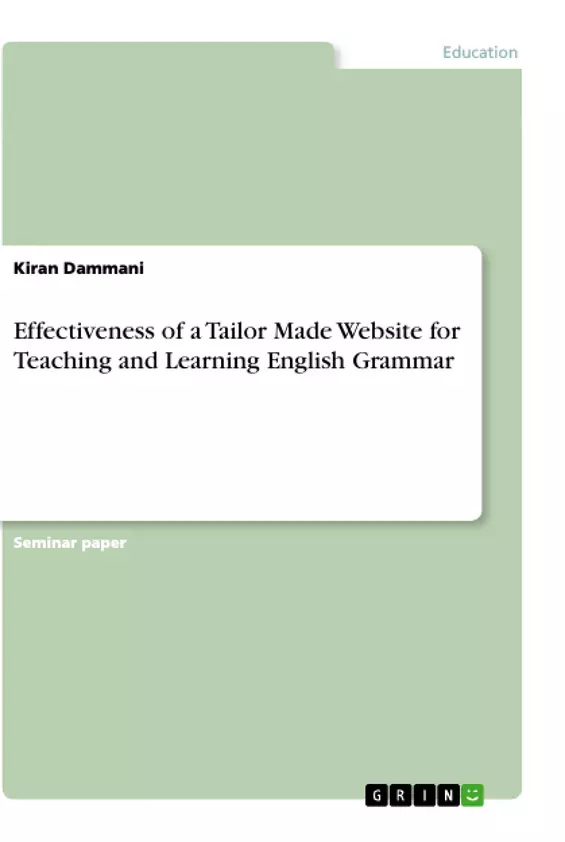The main objective of this study was to develop online self learning material of English grammar for the Students, aiming to inculcate the habit of self learning. It was designed by considering the need of the students of class XI and XII . To enable the students to access material with their own convenience, the developed online learning material was uploaded on the website, developed by the investigator. Using multi-stage sampling technique, eight Higher Secondary Schools, from Maharashtra were selected. Non-equivalent control group design was employed. Objective of the study was to compare adjusted mean scores of concept attainment of English grammar concepts of students learnt through online learning material and conventional method by considering pre-attainment of English Grammar Concepts as co-variate.
The data related to this objective were analyzed with the help of analysis of covariance.
Inhaltsverzeichnis (Table of Contents)
- INTRODUCTION
- OBJECTIVES
- HYPOTHESIS
- METHOD
- RESULTS
- DISCUSSIONS ON RESULS AND IMPLICATIONS
- IMPLICATIONS
- REFERENCES
Zielsetzung und Themenschwerpunkte (Objectives and Key Themes)
This study aimed to develop online self-learning materials for English grammar, specifically for students in Higher Secondary Level, with the objective of fostering self-learning habits. The website www.learngrammareasy.com was created to provide students with convenient access to these materials. The research employed a non-equivalent control group design to compare the effectiveness of online learning with traditional methods in terms of concept attainment.
- Development and implementation of online self-learning materials for English grammar.
- Comparative effectiveness of online learning versus traditional methods in teaching English grammar.
- The role of self-learning in promoting student autonomy and individual learning styles.
- The impact of digital technology on English language teaching and learning.
- The importance of tailoring educational materials to meet the needs of diverse learners.
Zusammenfassung der Kapitel (Chapter Summaries)
The introduction discusses the changing landscape of English language teaching and learning, highlighting the increasing need for learner autonomy and the potential of digital technology to address this need. It explains the rationale for focusing on Higher Secondary Level students, recognizing their maturity for self-motivated learning. The study emphasizes the importance of individual differences in learning styles, needs, and potential, highlighting the need for diverse learning materials.
The objectives section outlines the specific goals of the study, including the development of online learning materials, the creation of the website www.learngrammareasy.com, and the comparison of online learning effectiveness with traditional methods. The hypothesis section states the null hypothesis, suggesting no significant difference in concept attainment between students using online and conventional learning methods.
The methodology section details the research design employed, which involved the development of online self-learning materials using content analysis and the application of non-equivalent control group design for the effectiveness study. It also defines key terms like tailor-made website, self-learning material, and Higher Secondary students, providing context for the research.
Schlüsselwörter (Keywords)
The primary keywords and focus topics of this study include online learning, computer-assisted learning, self-learning material, English grammar, concept attainment, Higher Secondary Level, website development, non-equivalent control group design, and digital technology. The research explores the effectiveness of tailored online resources for teaching English grammar, focusing on the impact of self-learning and digital tools on student achievement.
- Quote paper
- DR. Kiran Dammani (Author), 2021, Effectiveness of a Tailor Made Website for Teaching and Learning English Grammar, Munich, GRIN Verlag, https://www.grin.com/document/1060829



